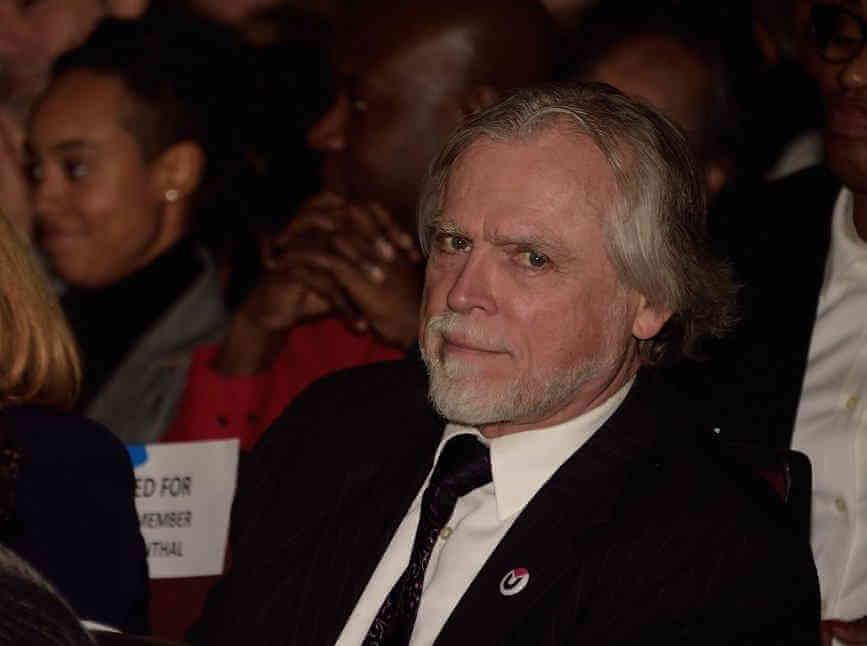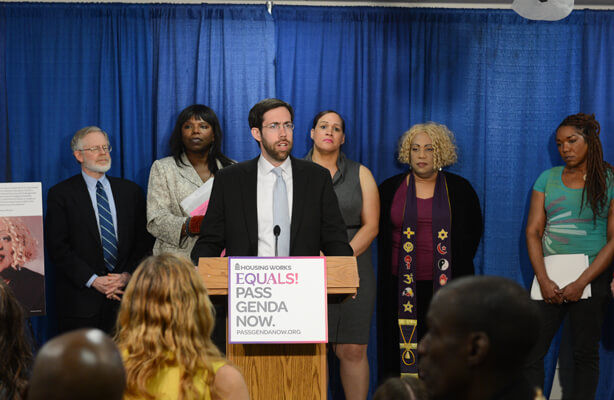The longtime HIV activist who has been the public face of the Plan to End AIDS is saying that while the plan has achieved some of its most important measures of success, it will not reduce the new HIV infections in New York annually to the ambitious numbers that were proposed when the plan launched five years ago.
“I know that they were quite aggressive,” Charles King, the chief executive of Housing Works, an HIV services organization, said of the original HIV infection targets. “Ultimately, I would have loved to achieve every goal to make sure we got to every population. What we really need to do is spend the coming year and two years after that to reach the key populations for whom those goals have not been realized.”
King and Mark Harrington, the chief executive of the Treatment Action Group, conceived of the plan while in jail following an arrest during a protest. The plan involves quickly moving HIV-positive people into treatment so they remain healthy and reduce the amount of the virus in their bodies so they cannot infect others. It also gives them services, such as housing, nutrition, and transportation, that make it easier for them to stay on their anti-HIV medication.
For people who are HIV-negative, the plan supplies pre-exposure prophylaxis (PrEP) and post-exposure prophylaxis (PEP). PrEP and PEP are anti-HIV drugs used by HIV-negative people to keep them uninfected. Both regimens are highly effective when used correctly.
Key measures of the success of the plan’s HIV prevention component were the number of people on PrEP and PEP, which has increased significantly, and the estimated number of new HIV infections in the state every year. There were roughly 3,000 new HIV infections in New York State in 2014. The plan proposed to get to an annual 750 new HIV infections statewide in 2020, with no more than 600 of those occurring in New York City.
“It is an incidence estimate that has a wide confidence margin,” King said. “We always knew that it was a range, not a number.”
Incident infections are cases that occur in a given time period — a calendar year in the case of the plan — and incidence is the rate at which those cases occur, though it is typically expressed as an estimate.
New HIV diagnoses, a different measure, result from infections that occurred in the year they are reported and those from any earlier year that were not previously diagnosed.
New York State appeared to be backing off of the 750 goal in October, and the city appeared to be doing the same when it released its annual HIV surveillance report on November 22. Both the city and state were touting significant reductions in new HIV diagnoses in 2018, though Johanne Morne, the director of the AIDS Institute, a unit of the state health department, told Gay City News in October that the state remained committed to reducing new HIV infections to 750 annually by 2020.
The state did not release data on estimated new HIV infections in 2018 in its October report. The complete 2018 data was released on December 1, World AIDS Day, and the state health department reported that there were 2,019 new HIV infections in New York in 2018. To get to 750 new HIV infections in 2020 would require a 63 percent reduction in new infections. While the 2019 data shows a 40 percent decrease in new infections since the start of the plan, it took four or five years to achieve that depending on when the plan is counted as having begun.
The city reported on November 22 that there were an estimated 1,600 new HIV infections in New York City in 2018. To get to 600 infections in 2020, it would also have to reduce new HIV infections by 63 percent in two years. It is unlikely that such a reduction can be achieved, given that in recent years the rate of decline has never been greater than 17 percent per year.
Morne is scheduled to speak at the Ending the Epidemic Summit in Albany on December 3 and 4. Morne will appear at one event with Dr. Oni Blackstock, the assistant commissioner for the Bureau of HIV/ AIDS Prevention and Control at the New York City health department. They could announce new targets for annual HIV infections that might be in the range of 1,000 to 1,300, King said.
New infections in some risk groups, such as drug injectors and mother-to-child transmission, had been substantially reduced before the plan was implemented. In other groups, such as white gay men, the plan has accelerated existing declining trends.
“All of these numbers were going down,” King said. “What [the plan] did is it accelerated everything we had done before 2014.”
Where the efforts are falling short is primarily among African-American and Latino men who have sex with men.
“I’m not ready to say we have achieved every threshold for every group,” King said adding that in 2020 “I’m not going to be saying, ‘Victory, it’s over and done.’”
What the data is showing is that as some HIV-positive people are dying — largely from causes unrelated to HIV — their numbers are not being offset by people who are newly infected. In New York City in 2018, 1,683 HIV-positive people passed away as opposed to the estimated 1,600 people who were newly infected.
“That is a legitimate definition of ending an epidemic,” King said. “That bending the curve measure has always been there.”


































